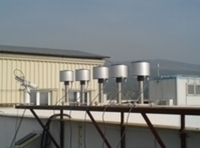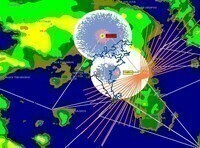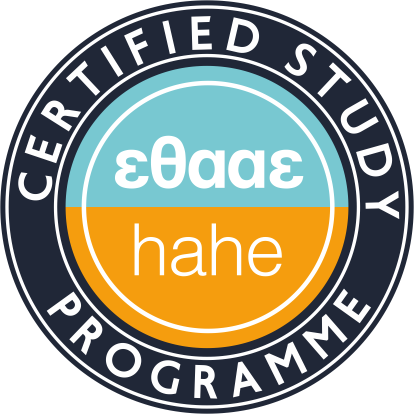DEPARTMENT OF APPLIED AND ENVIRONMENTAL PHYSICS
DEPARTMENT RESEARCH ACTIVITY

Research and activities in this field focus on the theoretical and experimental study of the atmospheric boundary layer and on its applications in air quality issues.
RESEARCHERS

Physics and chemistry of the ozone layer and propagation of solar radiation through the atmosphere. Interactions of solar radiation with atmospheric constituents (atmospheric aerosols and atmospheric gases). Radiative transfer modeling and impacts of UV radiation. Solar energy.
RESEARCHERS

Research is carried out in the area of atmospheric remote sensing with the help of laser sources (lidar techniques), focusing mainly on particulates and ozon.
RESEARCHERS

i. Diagnostic applications (electrical impedance tomography
ii. Therapeutic applications (microwave hyperthermia, RF ablation)
iii. Non-ionising radiation dosimetry (SAR assessment of telecommunications equipment).
RESEARCHERS

- Development of crystals. Study of crystalline structure and natural properties of inorganic compounds (semiconductor compounds of Tl and Sb, metal alloys of Ti, alloys of Wo Copper-genides and Copper-alogenides of As)
- Crystallography of organic compounds of I or F and organometallic compounds of Sn, or Cu with biological or pharmaceutical action).
- Crystallography of Proteins. (Their extraction from cells, cleaning, crystallization. Determination of crystal structure. Study of biological results of various mutations. Study of the role of various amino-acids in the nucleotide bonding GDP or GTP. Study of the role of certain proteins as enzyme reaction inhibitors.)
- Study of the distribution of electronic densities in crystals
- Characterization, microstructure and crystalline structure of industrial materials (Materials for rechargeable Li ion batteries, FCC catalysts, plastic materials. Study of the effect of changes in composition and manufacture conditions).
- Characterization-microstructure of thin film semiconductor materials. Study of the effect of changes in composition and manufacture conditions.
- Study of the effect of preferred orientation of crystallites in direct methods of determination of crystalline structures from dust diffractometer data
- Archaeometry (Qualitative analysis of phases in coatings and plinths from archaeological discoveries)
RESEARCHERS
 The activities of recent years in this research area consists of the development and study of physical properties of thick films, for the development of which several techniques are used. The research is performed in collaboration with the Department of Mechanical Engineering of the University. Several experienced researchers are involved along with PhD and postgraduate students.
The activities of recent years in this research area consists of the development and study of physical properties of thick films, for the development of which several techniques are used. The research is performed in collaboration with the Department of Mechanical Engineering of the University. Several experienced researchers are involved along with PhD and postgraduate students.RESEARCHERS

The research field of the group includes the study of dynamics of non-linear circuits and systems, with an emphasis on the study of their chaoticbehaviour. In particular, the group studies the possibilities for synchronization of two chaotic circuits, as well as the control of chaotic behaviour. The study is both experimental and theoretical (with the help of computer simulations).
RESEARCHERS

Atmospheric and Environmental Physics with emphasis on Global Change; climate change; greenhouse warming effects on the atmosphere; anthropogenic and natural variability of stratospheric and tropospheric ozone and related effects on Ultra Violet radiation, stratospheric dynamics and climate. Use and development of a fully coupled Chemistry-Climate Model (EMAC- Echam5/Messy) to simulate evolution of the atmosphere in the 21st century.
RESEARCHERS

The group is involved in projects studying the phases, the microstructures and the morphology of magnetic materials focusing on correlations of structure and magnetism not only in bulk materials but in magnetic nanostructures as well. The various activities may be summarized as follows:
Α). Growth - Fabrication of magnetic materials of technological interest.
Β). Characterization and study of microstructure till the atomic level.
C). Temperature-dependent magnetic characterization.
D). Thermal, mechanical and magnetic treatments for improving the magnetic study.
E). Theoretical study and simulation of magnetic features.
•Equipment:
- UHV chamber with 3 sources for e-beam evaporation of thin and multilayered films.
- Monocrystal fabrication with Czochralski – Bridgeman method.
- Inductive furnace for metal casting and alloy formation.
- Vibrating Sample Magnetometer - VSM for thin films (77-300K, 0-1.2T, 0–2T).
- Moessbauer spectrometer 57Fe (77 – 300 K)
RESEARCHERS

i. Coverage studies of telecommunication networks and broadcasting
ii. Assessment of emitted electric field from various devices
iii. Measurement and monitoring of the electromagnetic radiation in the environment
RESEARCHERS

Development and improvement of optical systems for remote sensing of atmospheric constituents and parameters, and of solar radiation. Quality assurance and quality control of measurements. Design and operation of monitoring networks.
RESEARCHERS

i. Telecommunications policy (broadband, advanced telecommunications services)
ii. Design and development of telecommunications networks (wireless and cable)
iii. Design of telecommunications systems components (antennas, transmission lines, filters, couplers, etc.)
iv. Telecommunications systems simulation
v. Development and analysis of telecommunications protocols

